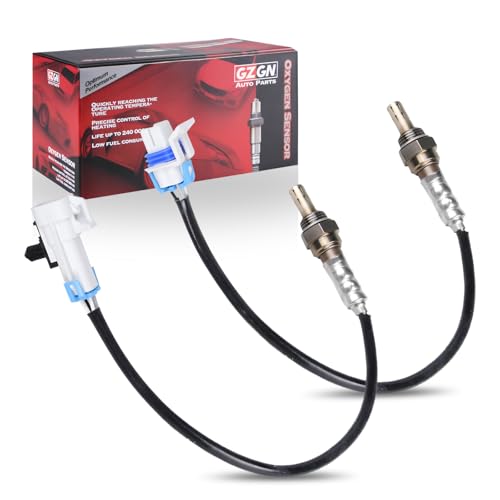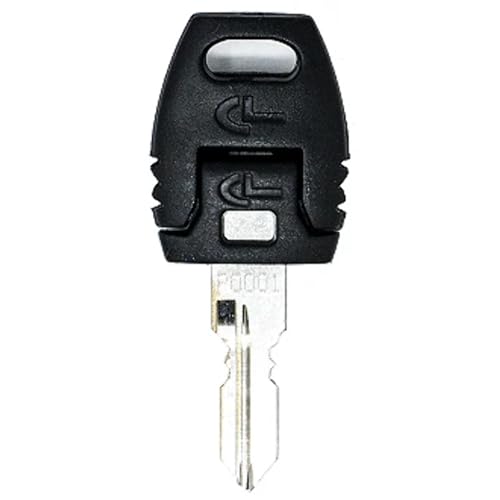Discover the essentials of Cummins fuel rail sensors, including an overview, important diagnostic codes, common issues like unstable idle, and proper installation techniques for optimal vehicle performance and longevity.
Fuel Rail Rationality Sensor Overview
Cummins Fuel System Basics
When it comes to understanding a vehicle’s fuel system, particularly in engines like those from Cummins, think of it much like a complex recipe where each ingredient plays its part. The Cummins fuel system is a marvel of engineering, designed to ensure precise and efficient fuel delivery to the engine’s combustion chambers. At the heart of this system lies the fuel rail, which acts as a central artery, distributing fuel from the main pump to individual injectors.
The rationality sensor mentioned here is like a guardian angel, monitoring the fuel pressure in the rails and ensuring that every drop of diesel or gasoline gets to where it’s supposed to be. These sensors are critical because they provide real-time data on fuel system performance, much like how a chef checks the temperature of the oven before baking.
Now, imagine if your favorite dish required precise timing and measurement—just like how an engine needs consistent fuel pressure for optimal performance. The rationality sensor is akin to having a timer that ensures each ingredient hits its mark at just the right time, making sure your engine runs smoothly and efficiently every single ride.
Importance of Fuel Rail Sensors
Engine Performance Monitoring
Ever wonder how a car knows when to give it that extra boost or adjust its performance based on the driving conditions? The answer lies in the intricate sensors working tirelessly under the hood. Fuel rail sensors play a crucial role here, acting like the eyes and ears of your engine. They monitor the fuel pressure within the fuel rails, ensuring that the right amount of fuel reaches each cylinder at just the right time. This is akin to how a teacher ensures that every student gets the same amount of ink on their test paper—just enough for clarity but not too much.
Fuel rail sensors are vital because they provide real-time data about engine performance. Think of them as the nervous system of your car, constantly sending signals to the computer (ECU) about fuel pressure levels. If these sensors fail or malfunction, it’s like having a broken connection in a network—information isn’t flowing smoothly, and problems can arise.
These sensors work hand-in-hand with other components to ensure that the engine runs efficiently. For instance, if the fuel pressure is too high or too low, the ECU will make adjustments to maintain optimal performance. This is similar to how your body adjusts its temperature based on external conditions—sweating when it’s hot and shivering when it’s cold.
In summary, the importance of fuel rail sensors cannot be overstated. They are essential for maintaining engine health and ensuring smooth operation. By keeping a close eye on fuel pressure, these sensors contribute to better fuel efficiency, reduced emissions, and improved overall performance.
Symptoms of Faulty Fuel Rails
Unstable Engine Idle
Have you ever noticed that your car’s engine seems to be struggling to keep a steady idle? This can be quite unsettling and might indicate an issue with the fuel system. One common culprit is a faulty fuel rail, which plays a crucial role in maintaining consistent pressure and flow of diesel fuel to each cylinder.
Imagine your fuel rail as a highway, and your cylinders are like the destinations you need to reach. If this “highway” isn’t functioning correctly, it can lead to traffic jams or blockages, causing delays and inconsistencies in the journey—just like an unstable engine idle.
Unstable idling could be a sign that something’s amiss with the fuel rail. For instance, if you notice your vehicle’s RPM fluctuating, or hear unusual noises coming from under the hood when it’s idling, these could be red flags. These symptoms might seem minor at first, but ignoring them can lead to more significant issues down the line.
In fact, just like how a kink in a garden hose reduces water flow and pressure, a faulty fuel rail can disrupt the consistent supply of fuel needed for smooth engine operation. Regular maintenance and monitoring are essential to ensure that your fuel system remains healthy and efficient.
Diagnosing Fuel Rail Issues
Diagnostic Trouble Codes
When you’re dealing with fuel rail issues in your Cummins engine, one of the first things that will alert you is a set of diagnostic trouble codes (DTCs). These codes are like a digital whisper from the engine itself, signaling that something isn’t quite right. Imagine these codes as secret messages left by the engine—only they’re not so secretive; today’s modern engines have made them very clear and comprehensible.
Understanding DTCs
These DTCs aren’t just random numbers or letters—they’re a language that your vehicle understands. Each code points to a specific problem, like a broken fuel rail sensor or an issue with the fuel delivery system. Think of it as having a map of potential problems; you need to decipher which path (or codes) lead to the trouble spot.
Reading DTCs
To interpret these codes effectively, most vehicles come equipped with diagnostic tools that can read and decode them for you. Some people might be intimidated by this process, but don’t worry! It’s like having a smart phone that knows its own problems and can tell you exactly what needs to be checked.
Common Issues Indicated by DTCs
- P0171 and P0174: These codes indicate an issue with the air/fuel ratio. It’s as if your engine is either too hungry or too full, not getting the right mix of fuel and air needed for optimal performance.
- P0384 and P0385: These codes suggest a problem with the fuel injector circuit. Imagine trying to pour water into a garden hose; if there’s an issue, you might not be getting enough or it might be stopping mid-stream.
- P1472 and P1473: These are related to the fuel pressure sensor. It’s like checking the water pressure in your pipes—too much or too little can cause all sorts of problems.
Each DTC is a piece of this intricate puzzle, helping you pinpoint exactly where the issue lies within the complex web of your vehicle’s fuel system. By understanding and addressing these codes, you’re not just solving one problem; you’re maintaining the overall health of your engine—just like making sure every part of your house is in tip-top shape!
Sensor Installation and Calibration
Proper Mounting Techniques
When it comes to installing fuel rail sensors, precision is key. Think of mounting these sensors like placing a delicate piece in a puzzle—each position can significantly affect how well your engine performs. So, what exactly are the proper mounting techniques that ensure a seamless fit?
Firstly, cleanliness is paramount. Before mounting any sensor, make sure the surface where it will be installed is free from dirt and debris. Just as you would clean a canvas before painting on it, this step ensures optimal contact between the sensor and the engine’s components.
Next, consider the orientation of the sensor. Ensure that it aligns correctly with the fuel rail to avoid any misreadings or malfunctions. This alignment is crucial, much like ensuring that the gears in a watch mesh perfectly for smooth operation. If they don’t line up just right, expect some inefficiencies in your engine’s performance.
Proper mounting also involves careful consideration of the sensor’s securing method. Most sensors use clamps or clips to stay in place. These should be tightened but not over-tightened; think of it as giving a firm hug instead of a bear hug—just enough pressure to hold securely, but not so much that you might damage anything.
Another important aspect is the position relative to other components. Ensure there’s sufficient clearance between the sensor and nearby parts to avoid any interference or potential damage during engine operation. Imagine placing a small lamp next to your desk; too close, and it might block your view or catch fire—just as sensors need enough space around them.
Lastly, consider thermal considerations. Fuel rail sensors are sensitive to temperature changes. Make sure they’re not in direct contact with hot components that could alter their readings, much like ensuring a computer’s CPU isn’t placed on a surface that gets too warm. This can lead to inaccurate data collection and potentially dangerous situations.
By following these mounting techniques, you ensure that your fuel rail sensors are installed correctly, contributing significantly to overall engine performance and reliability.
Maintenance Tips for Sensors
Regular Cleaning Procedures
Cleaning your fuel rail sensors is like giving your car a thorough bath—necessary to keep it running smoothly and efficiently. Imagine your sensors are like the pores on your skin; they need regular unclogging to function properly! Over time, dirt, grime, and fuel residues can accumulate on these sensitive components, much like how dust and oils can clog your skin’s pores.
To ensure you’re giving them a proper bath, start by disconnecting the power supply from your sensors. This step is crucial as it prevents any accidental damage or electrical shorts that could happen while working with live electronics. Next, use a soft brush or compressed air to gently remove loose debris and particles. For tougher grime, a gentle cleaning solution specifically designed for automotive parts can do wonders.
It’s also wise to dry the sensors thoroughly after cleaning to avoid moisture buildup, which can lead to corrosion over time. Think of it like making sure your skin is fully dried after a bath—any lingering water could cause irritation or even breakouts!
Regularly cleaning these components not only helps in maintaining optimal performance but also ensures that you catch any potential issues early on before they escalate into bigger problems. Just as regular skincare routines help maintain youthful and healthy skin, consistent maintenance of your sensors can keep your engine running at its best!


